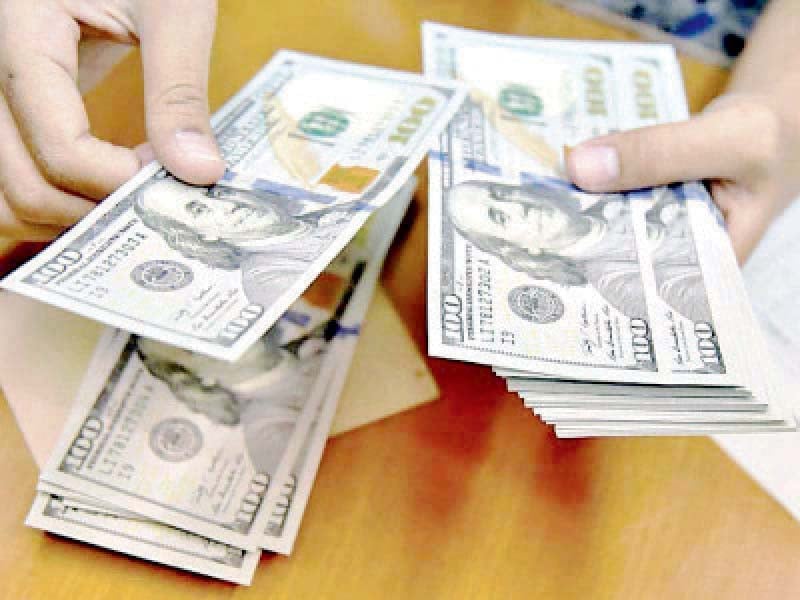Pakistan temporarily depleted its meager foreign exchange reserves to a six-month low of $10.6 billion after repaying a $1 billion Chinese commercial loan with the intention of having it refinanced shortly.
According to Pakistani authorities, the government paid back the $1 billion loan from the Industrial and Commercial Bank of China (ICBC) this month in two equal installments. Two years prior, the loan was granted by the ICBC at fluctuating interest rates, which amounted to about 7.5%.
Another $300 million loan tranche from the ICBC is expected to mature by the middle of next month, according to the sources. They also stated that the $300 million will be retired by the government in April.
The central bank’s reserves fell to $10.6 billion in the third week of March as a result of the $500 million repayment of the second tranche. As a result, the total official foreign exchange reserves fell to their lowest level in six months.
The central bank made up the difference by buying dollars from the market and relying on some foreign inflows after the $500 million first tranche was paid in the first week of March.
In order to increase foreign exchange reserves in 2024, the central bank governor previously stated that his organization had purchased $9 billion from the market. Despite the International Monetary Fund program, the reserves would have been under $2 billion without these purchases.
The Finance Ministry hoped the facility will be refinanced by the ICBC. According to them, talks have already started but haven’t progressed to the stage where interest rates have been decided.
Beijing, a friendly country that continuously rolls over $4 billion in cash deposits, $6.5 billion in commercial loans, and a $4.3 billion trade finance facility, is crucial to Pakistan’s survival.
This year, the remaining $2.7 billion in Chinese commercial loans are due in April or June. Three Chinese commercial banks have a $2.1 billion syndicated financing arrangement that matures in June. In addition, the $300 million loan from the Bank of China is due to mature in the same month, and Pakistan needs to refinance it in order to keep its reserves at the very low levels.
To prevent a run on its reserves, the nation remains mainly relies on new foreign loans as well as the rollover and refinance of its current debt. This time, the IMF program has not assisted in obtaining significant foreign funding, in contrast to previous times.
A staff-level agreement was achieved this week between the IMF and Pakistan about the completion of the Extended Fund Facility’s initial review. The $1 billion tranche will be released upon the board’s ratification of the accord.
For both domestic and exogenous considerations, the IMF board meeting’s date is still up in the air. In May or June, the board might consider Pakistan’s case. Before the end of June, the first review is intended to be completed and the tranche disbursed.
If the IMF board meeting is postponed until June, the IMF staff might want to examine and approve the budget for fiscal year 2025–2026 first.
There are still a lot of topics up for debate, especially the taxes on tobacco, alcohol, and the real estate industry. As part of its strategy to move investment from speculative to productive sectors of the economy, the IMF is not inclined to lower the transaction taxes on real estate.
Last month, Pakistan also asked China to reschedule $3.4 billion in debt for two years in order to fill an IMF-identified foreign finance need. The Export-Import (Exim) Bank of China was asked to take into account rearranging its loans that were due in October 2024 but were not due until September 2027.
The request’s status has not yet been formally announced by the Ministry of Finance. For the three-year IMF program duration, Pakistan must find funding sources to cover the $5 billion external financing gap.
The IMF acknowledged during the recent review discussions that the external sector has stabilized, but it also stated that there are still risks that can be fixed by combining strict monetary and fiscal policies with exchange rate flexibility.
Despite significant weakening in recent days, the rupee-dollar parity has mostly held steady this fiscal year. On Thursday, the rupee-dollar exchange rate ended the day at Rs280.2 to the US dollar.
For the latest updates and insights on new developments, visit the Socioon Blog
NEWSON –Pakistan pays back $1b Chinese loan
Q1: Why did the foreign exchange reserves drop to $10.6 billion?
A: The reserves declined after the government repaid a $1 billion Chinese loan to the ICBC in March 2025. This included two tranches of $500 million each.
Q2: Is China helping refinance these loans?
A: Yes, authorities are in discussions with Chinese banks, including ICBC and the Export-Import Bank of China, to refinance or roll over upcoming debt maturities, although agreements are still in progress.
Q3: When will the IMF release the next tranche of funding?
A: A $1 billion tranche will be released after IMF board approval, which is expected by May or June 2025, pending final review and possibly budget discussions.


